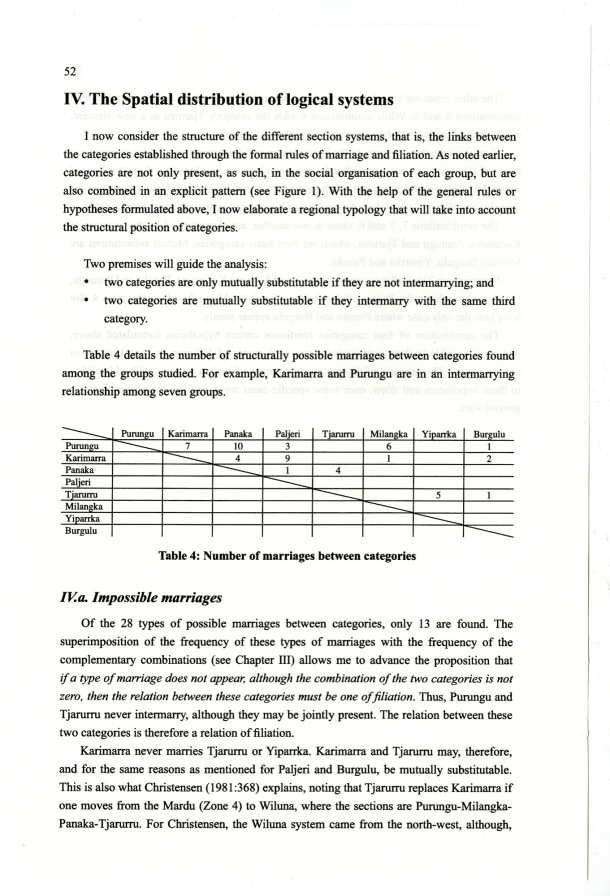|
| 
[Note: this transcription was produced by an automatic OCR engine]
52
IV. The Spatial distribution of logical systems
I now consider the structure of the different section systems, that is, the links between
the categories established through the formal rules of marriage and filiation. As noted earlier,
categories are not only present, as such, in the social organisation of each group, but are
also combined in an explicit pattern see Figure 1. With the help of the general rules or
hypotheses formulated above, I now elaborate a regional typology that will take into account
the structural position of categories.
Two premises will guide the analysis:
0 two categories are only mutually substitutable if they are not intermarrying; and
' two categories are mutually substitutable if they intermarry with the same third
category.
Table 4 details the number of structurally possible man-iages between categories found
among the groups studied. For example, Katimarra and Purungu are in an intermarrying
relationship among seven groups.
Table 4: Number of marriages between categories
I I/Ia. Impossible marriages
Of the 28 types of possible marriages between categories, only 13 are found. The
superimposition of the frequency of these types of marriages with the frequency of the
complementary combinations see Chapter HI allows me to advance the proposition that
if a type of marriage does not appear, although the combination of the two categories is not
zero, then the relation between these categories must be one afflliation. Thus, Purungu and
Tjarurru never intermarry, although they may be jointly present. The relation between these
two categories is therefore a relation of filiation.
Karimarra never marries Tjarurru or Yiparrka. Karimarra and Tjarun-u may, therefore,
and for the same reasons as mentioned for Paljeri and Burgulu, be mutually substitutable.
This is also what Christensen 1981368 explains, noting that Tjarurru replaces Karimarra if
one moves from the Mardu Zone 4 to Wiluna, where the sections are Purungu-Milangka—
Panaka-Tjarurru. For Christensen, the Wiluna system came from the north—west, although,
|